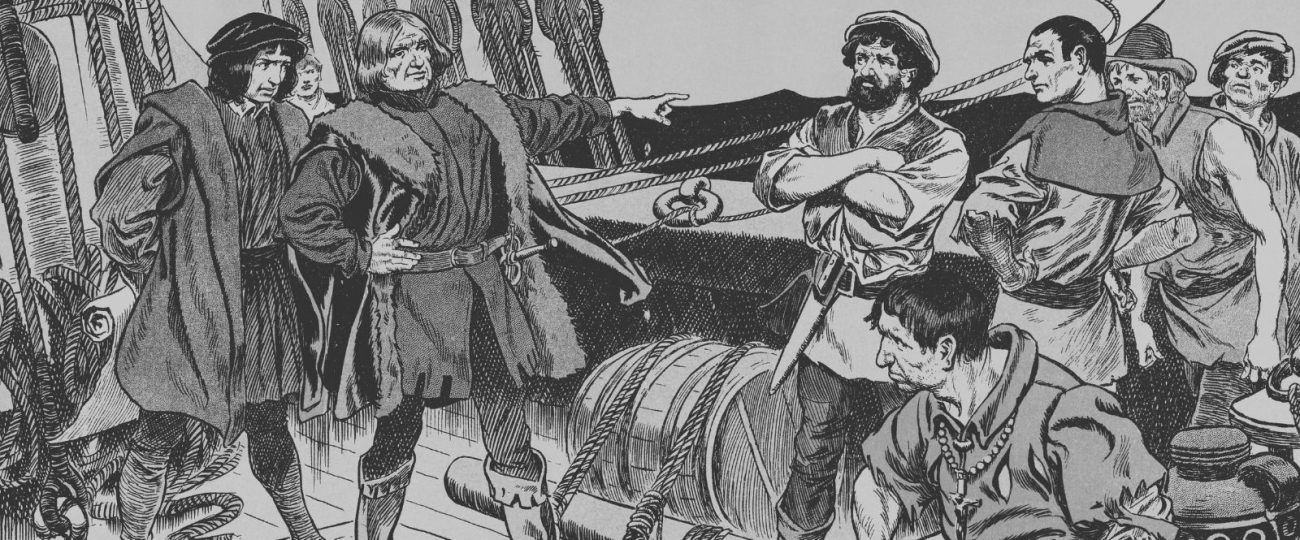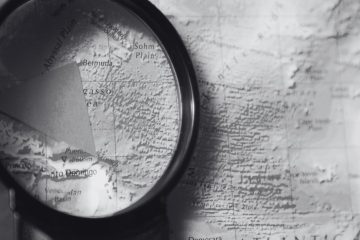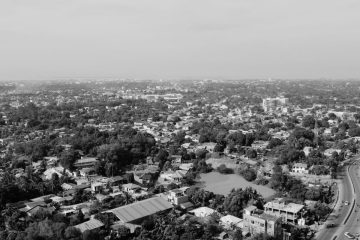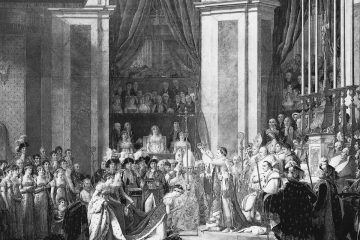What Happened On October 12th?
On October 12, 1492, just before dawn, Rodrigo de Triana called out from the crow’s nest of the Pinta, one of Christopher Columbus’s three ships. “Tierra! Tierra!” he shouted as the outline of land emerged. Columbus, who had faced growing doubt and unrest among his crew during their thirty-three-day voyage across the Atlantic, felt vindicated. The sight of land calmed the fears of his men, who had become restless. Columbus commanded the fleet to anchor offshore and prepared a small landing party to row toward the shore, eager to claim the new territory for Spain.
As the first light broke over the horizon, Columbus and his crew rowed through the calm waters toward the island. The white sands glowed under the rising sun, and when they reached the shore, Columbus stepped onto the beach. He raised the banner of Castile and Leon, officially claiming the land for Spain, and named the island San Salvador, meaning “Holy Savior.” His men knelt beside him and prayed in gratitude, convinced they had found one of the islands leading to Asia. Columbus stood firm in his belief that his mission had succeeded, certain that his search for a new route to the East had been fulfilled.
The Taíno people, who lived on the island, observed Columbus’s approach with curiosity and caution. Columbus watched them closely and noted their painted bodies and gold jewelry. He recorded in his journal that they appeared friendly and generous, and he immediately focused on the small gold pieces they wore. He offered them glass beads, mirrors, and red caps, which they accepted with fascination. Columbus viewed this first encounter as a chance to build connections, but his journal entries showed that he saw the Taíno as a means to locate gold and as potential converts to Christianity.
Columbus explored the island further, documenting every detail he encountered. The lush greenery, fresh streams, and vibrant birdlife impressed him. The Taíno shared pineapples, mamey, and guava with Columbus and his men, introducing them to flavors they had never tasted before. One fruit, the mamey, had a soft, sweet flesh, which Columbus noted with curiosity. He took note of the tall palm trees, thinking their trunks could serve in shipbuilding and construction. He believed the island offered great potential and imagined it as a future base for Spanish expansion and trade.
Columbus instructed scouts to venture deeper inland, eager to uncover the island’s resources. The crew, excited for the opportunity to explore, moved through the dense vegetation, recording the plants they discovered. They found the cohiba plant, which the Taíno used in their rituals. Columbus documented this custom in his logs, noting its importance, even though he did not fully understand it. He believed these findings could provide valuable information for Spain, demonstrating the island’s cultural and economic value.
Columbus remained focused on the gold ornaments worn by the Taíno, believing they hinted at larger deposits. He speculated in his journal that gold lay somewhere inland. Determined to find it, he planned to gain the trust of the Taíno, expecting them to lead him to its source. He sent scouts to explore the island’s interior, urging them to find evidence that would support his claims to the Spanish monarchs. Columbus centered his efforts on locating gold, knowing that its discovery would be crucial for his mission’s success.
Columbus, certain that he had reached Asia, misinterpreted the land he encountered. He called the Taíno “Indians,” believing they belonged to the edge of the Asian continent. His conviction that he stood near the East influenced his reports and shaped the maps that explorers used for years. His journal entries revealed his certainty that he had reached the territories described by Marco Polo, reinforcing his belief that he stood on the path to the riches of Asia.
Columbus developed strategies for control as he interacted with the Taíno. He noticed their lack of European tools and weapons, and he saw their vulnerability as an opportunity. In his journal, he remarked that they showed no knowledge of iron tools and believed they could be easily converted and used as labor. Columbus aimed to take advantage of their openness, seeing their hospitality as a way to establish dominance. He viewed the island’s people not as partners but as subjects who could serve Spain’s interests.
Cultural misunderstandings arose as Columbus and the Taíno interacted. When the Taíno offered food and water, Columbus misread their hospitality as submission. He saw their actions as signs of acknowledgment, not understanding that they extended these gestures according to their customs. This misinterpretation set a pattern for how he viewed the Taíno, and he documented his intentions to gain control over them, believing they would help Spain expand its empire.
Columbus explored the island’s coastline further, assessing its strategic importance. He imagined the forests as sources for wood that could build ships and settlements. He tested the soil, seeing its potential for plantations and crops like sugarcane. He wrote reports to Ferdinand and Isabella, detailing the island’s resources and its potential as a profitable outpost for Spain. He aimed to emphasize its economic and strategic advantages, presenting the island as a valuable addition to the empire.





